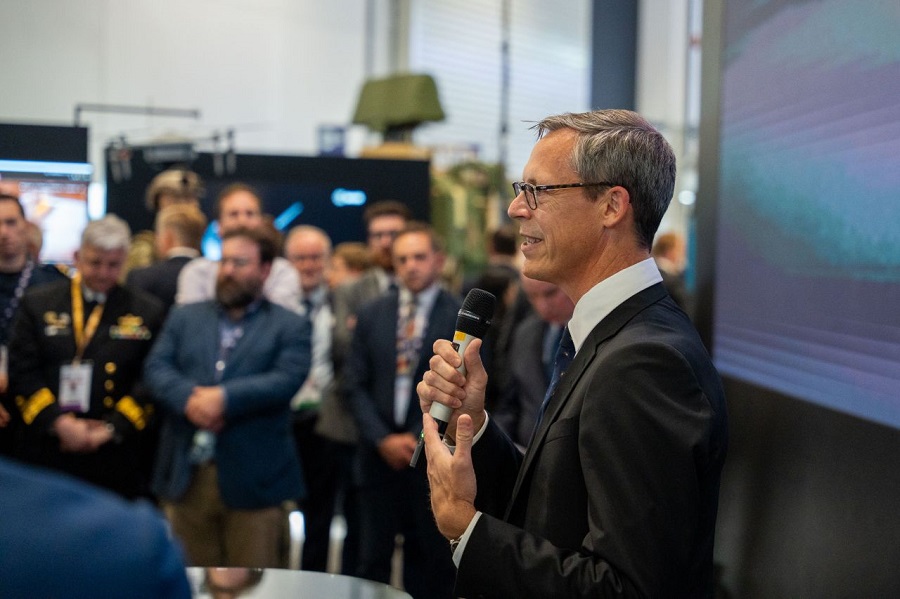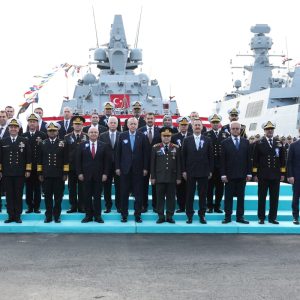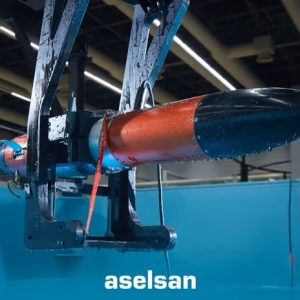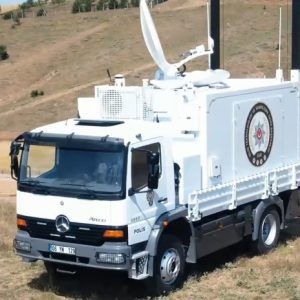Interoperability for the underwater fight—now on a NATO timeline
NATO has tasked a Saab‑led consortium, MANGROVE, to deliver the Allied Underwater Battlespace Mission Network (AUWB‑MN). The goal is clear: knit together crewed and uncrewed maritime systems across allied fleets. The project began on 1 September 2025. Saab Kockums serves as prime. The first 12 months focus on a reference architecture and a test‑and‑reference environment. [1][2]
In practice, the network should enable rapid, secure information exchange among platforms above, on and below the water. It must also scale across nations and services. Consequently, NATO is aiming for a standard that commanders can plan around and industry can build to. This matters for ASW, seabed infrastructure security, and multi‑domain integration. [1][3]
Key Facts
- Prime & team: Saab’s business area Kockums leads MANGROVE with CETENA and IDS (Fincantieri Group), FlySight, GraalTech, Miraya, Saab UK, BlueBear, S2IX and the University of Plymouth. [1]
- When selected: 16 July 2025; project start: 1 September 2025. [1]
- Sponsors (12 nations): UK (lead), Sweden, United States, Australia, Spain, Germany, Italy, Portugal, Canada, Netherlands, Denmark, Norway—each committing to adopt the resulting standard. [1]
- Deliverables: Reference Architecture plus Test & Reference Environment for NATO’s underwater mission network; objective is a new NATO standard for operational interoperability. [1]
- Strategic anchor: Part of NATO’s Digital Ocean and the ASW Barrier Smart Defence Initiative, both driving persistent sensing and decision‑advantage from seabed to space. [1][3]
What AUWB‑MN actually solves
Fragmented C2 and data paths: Today’s undersea operations rely on a patchwork of national networks and proprietary links. As a result, sharing data is slow and fragile. AUWB‑MN targets the plumbing: how a UUV report fuses with a frigate’s towed array; how a USV acts as a relay; and how a task group shares tracks and intent without bespoke coding each time. [1][3]
Latency and link asymmetry: Acoustic channels are narrow and fickle, while RF and SATCOM sit above the surface. Therefore, a mission network must juggle acoustic, optical, surface‑relay RF, and space links. It also needs smart buffering and edge autonomy so decisions continue when links fade. NATO material points to a mix of acoustics and novel techniques that keep UxS connected enough for tasking and reporting. [4][5]
From experiments to doctrine: REPMUS and Dynamic Messenger have tested UUV/USV swarms, AI minehunting, and distributed ASW cells. Now AUWB‑MN aims to codify those lessons into repeatable practice—so planners can rely on them and buyers can procure against them. [3]
Architecture: reference first, then repeatable adoption
Saab and partners are building two pillars that matter for the long haul.
- Reference Architecture (RA): A vendor‑agnostic map of functions, interfaces, and security boundaries. It should align with NATO standardization (for example, STANAG families). It also models mission threads from detection to engagement across MCM, ASW, and seabed protection. The RA lets navies plug a new AUV or seabed node into the fight without a custom integration sprint. [1]
- Test & Reference Environment (TRE): A realistic, instrumented sandbox—part digital twin, part hardware‑in‑the‑loop. Here, acoustic modems, autonomy stacks, and C2 adapters can be verified against the RA. TREs turn “interoperable by design” from a slide into a testable claim. [1][5]
Security remains a first‑class requirement. Mission networks at sea must assume contested spectrum, imperfect crypto custody, and diverse supply chains. Thus, the design should segment by classification and function, enforce zero‑trust patterns for UxS control, and allow graceful degradation when parts of the network go dark. [1][3]
Industrial implications: who benefits and why it matters
For primes and SMEs, a common mission network can unlock scale. When AUWB‑MN sets the connective tissue, sensor and effector makers can focus on performance rather than middleware. As a result, integration cycles should shorten, and the market for interoperable UUVs, USVs, and modular payloads should grow.
For navies, the payoff is force mass and persistence. Distributed nodes—fixed seabed arrays, expendable sonobuoys, large USVs towing arrays, and AUV pickets—become coherent when their observations are fused and shared on a common network. That coherence is central to NATO’s ASW Barrier concepts and Digital Ocean vision. [3][5]
Why it matters now
The North Atlantic and Arctic remain contested undersea spaces. Russian SSNs and SSBNs seek sea‑denial options. Moreover, seabed infrastructure is a tempting target. Since 2022, allies have rebuilt ASW skills through serial exercises such as Dynamic Mongoose. Yet the data layer still lags. AUWB‑MN is a needed correction. [6][7]
If MANGROVE delivers a certifiable RA and a working TRE within year one, NATO could start spiral fielding. Bronze, silver, and gold tiers could map to platform classes and threat bands. This mirrors patterns already visible in allied ASW transformation roadmaps. [5]
What to watch on the road to adoption
- Governance and standardization: Which NATO bodies own the RA/TRE, and how updates are ratified, will shape longevity. Alignment with existing C2 and data standards will prevent duplication. [3]
- Cross‑domain hooks: The value rises when the network speaks to air and space ISR taskers, not only maritime CMS. Interop with MPA, P‑8A, MQ‑9B (maritime), and satellite tasking chains will be decisive. [3]
- Security accreditation: Expect staged authority to operate by classification domain and theatre. Clear paths will speed adoption.
- Exercise integration: REPMUS/Dynamic Messenger and Dynamic Mongoose are the best venues to prove AUWB‑MN at scale. [3][6]
Conclusion
AUWB‑MN is not a single product. It is a constitution for underwater C2. If Saab’s MANGROVE team can turn years of experiments into a living standard—portable across fleets and budgets—NATO gains a durable edge. In the one domain where physics and secrecy slow everything down, a robust network becomes a weapon. AUWB‑MN is the blueprint.
References
[1] Saab press release, “Saab to lead NATO’s new underwater battlespace project,” 19 Sep 2025. https://www.saab.com/newsroom/press-releases/2025/saab-to-lead-natos-new-underwater-battlespace-project (accessed 19 Sep 2025).
[2] Naval Today coverage, “NATO picks Saab‑led consortium for new underwater battlespace project,” 19 Sep 2025. https://www.navaltoday.com/2025/09/19/nato-picks-saab-led-consortium-for-new-underwater-battlespace-project/ (accessed 19 Sep 2025).
[3] NATO HQ, “NATO and industry work together to strengthen maritime situational awareness (Digital Ocean),” 17 Apr 2024. https://www.nato.int/cps/en/natohq/news_224798.htm (accessed 19 Sep 2025).
[4] Navy Leaders CNE/UDSA presentation (AUWB‑MN concept excerpts), “Deployable ASW Barrier – Unified Concept,” PDF. https://cdn.asp.events/CLIENT_Defence__8EE24275_D70D_4386_936BB8991B847FF8/sites/Navy-Leaders-2022/media/libraries/cne24-presentations/Day-1-UDSA-1515-Ian-Danbury.pdf (accessed 19 Sep 2025).
[5] Navy Tech 2025 briefing, “Under Water Battlespace Transformation,” Commodore (ret.) David Burton, 9 Jun 2024 (PDF). https://cdn.asp.events/CLIENT_Defence__8EE24275_D70D_4386_936BB8991B847FF8/sites/Navy-Leaders-2022/media/libraries/navy-tech-2025-presentations/Day-3-Plenary-1110-Commdore-ret-d-David-Burton.pdf (accessed 19 Sep 2025).
[6] NATO MARCOM, “Exercise Dynamic Mongoose: antisubmarine warfare capabilities to the test,” 24 Apr 2025. https://shape.nato.int/news-archive/2025/exercise-dynamic-mongoose-putting-antisubmarine-warfare-capabilities-to-the-test (accessed 19 Sep 2025).
[7] GlobalSecurity.org, “NATO wraps up Dynamic Mongoose 2025,” 12 May 2025. https://www.globalsecurity.org/military//library/news/2025/05/mil-250512-nato-marcom01.htm (accessed 19 Sep 2025).
Further Reading
- NATO, Digital Ocean initiative overview. https://www.nato.int/cps/en/natohq/news_228959.htm
- MarineLink, “Saab to Spearhead NATO’s New Underwater Defense Project,” 19 Sep 2025. https://www.marinelink.com/news/saab-spearhead-natos-new-underwater-530216
- Baird Maritime, “Saab‑led consortium to develop new NATO underwater mission network,” 19 Sep 2025. https://www.bairdmaritime.com/security/naval/unmanned-naval-systems/saab-led-consortium-to-develop-new-nato-underwater-mission-network











